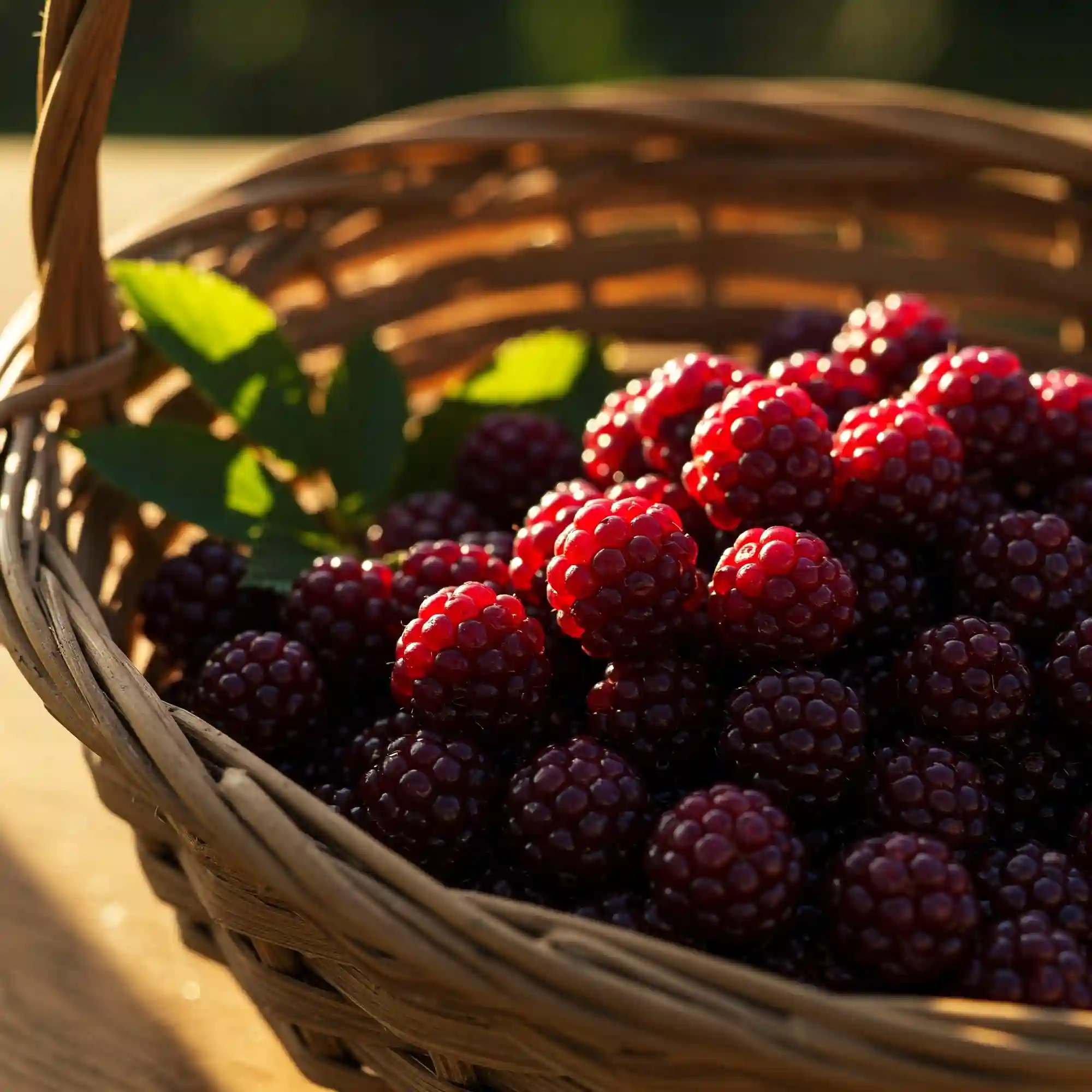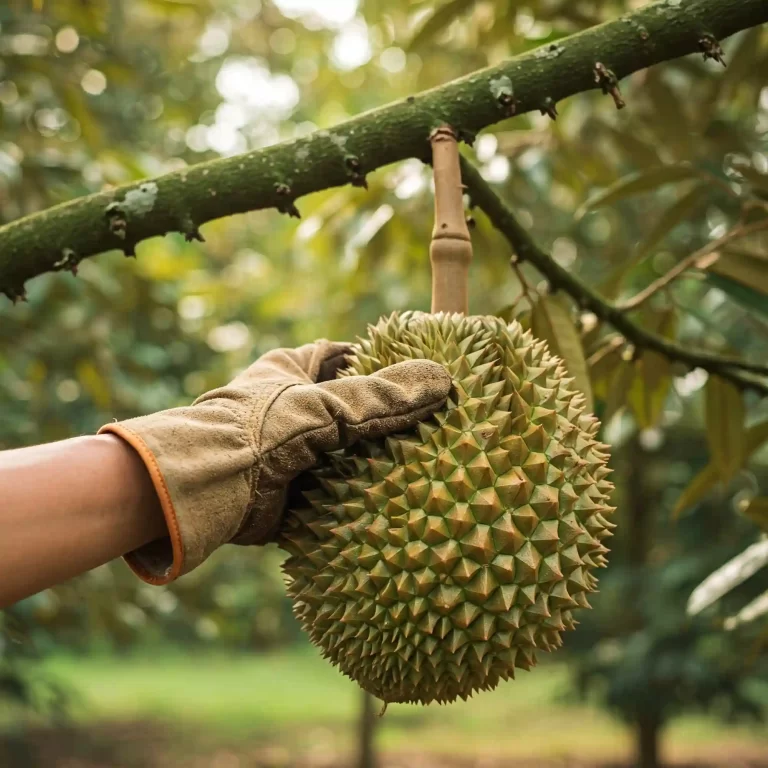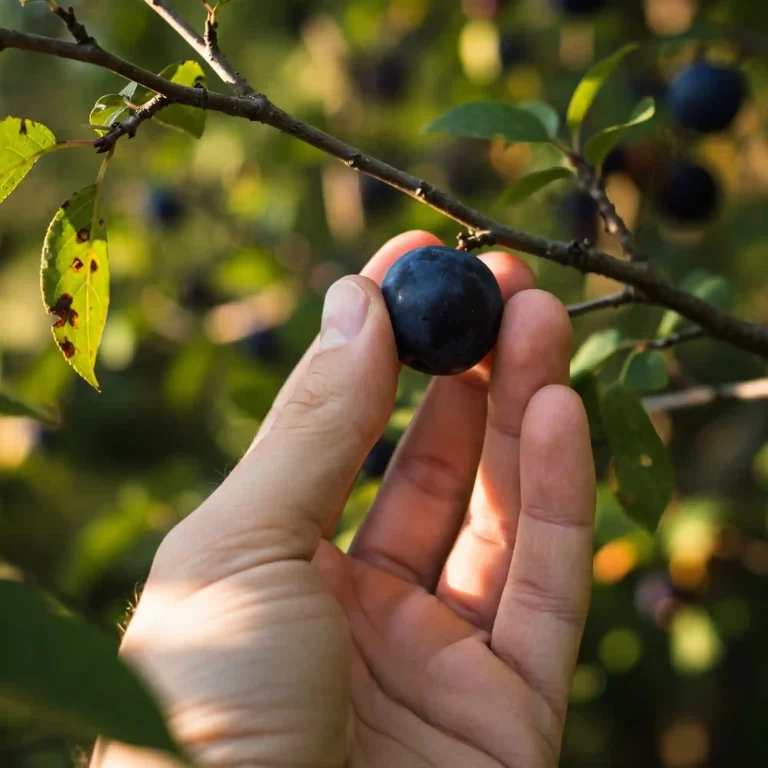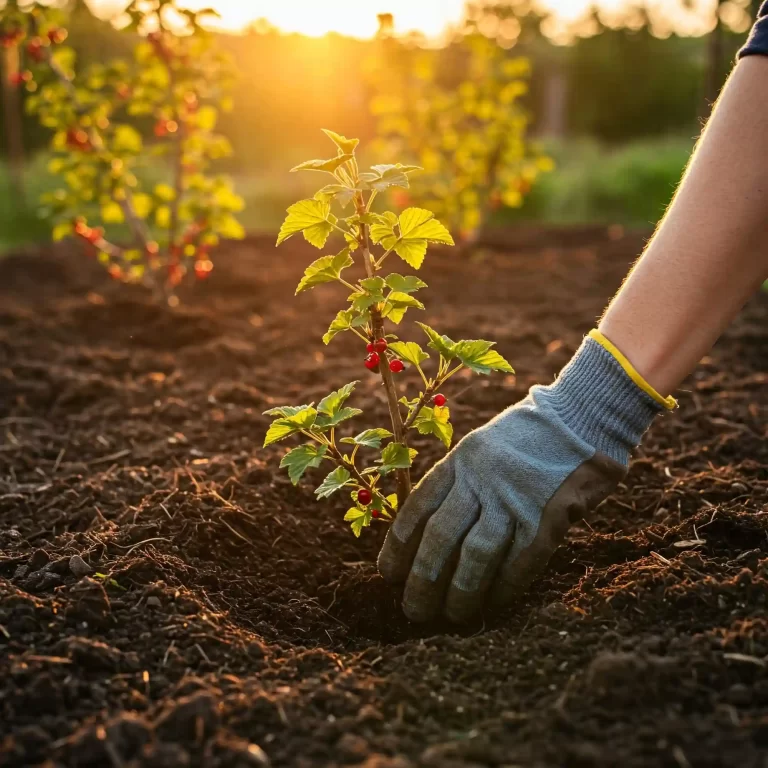Are you tired of store-bought berries that lack the intense, sweet-tart flavor you crave? Do you dream of harvesting your own juicy boysenberries, right from your backyard, but feel overwhelmed by the process? You’re not alone. Many gardeners struggle with the specifics of growing these delicate yet rewarding fruits. It’s frustrating to invest time and effort, only to end up with a meager harvest or plants that succumb to pests. The problem isn’t your ‘green thumb’ – it’s often a lack of clear, straightforward guidance. You know the disappointment of watching your plants wither, the small, tasteless berries, the feeling that you’ve wasted precious time and resources. Imagine the sticky, sweet promise of a boysenberry pie, the envy of your neighbors, the satisfaction of picking a bowlful of your own fruit. But how do you get there? That’s where this guide comes in. I’ve put together the simple, real-world advice you need to grow boysenberries that’ll make your taste buds sing. Let’s skip the confusing jargon and get right to the good stuff: growing a bounty of berries you’ll be proud of.”
Do you dream of enjoying the sweet, tart flavor of homegrown boysenberries? Tired of store-bought berries that lack the freshness and flavor of those picked straight from the vine? You’re not alone! Many gardeners yearn to cultivate these delicious fruits, but often feel overwhelmed by the process.
This comprehensive guide will equip you with the knowledge and confidence to successfully grow boysenberries in your own garden. We’ll cover everything from selecting the right location and preparing the soil to caring for your plants, protecting them from pests and diseases, and harvesting a bountiful crop. By following these simple steps, you’ll be well on your way to enjoying the sweet rewards of homegrown boysenberries.
Understanding Boysenberries: A Sweet Start
Let’s start by understanding what exactly a boysenberry is. Unlike typical raspberries or blackberries, the boysenberry is a unique hybrid, a result of crossing the loganberry with the blackberry and the raspberry. This fascinating lineage gives it a distinct flavor profile – a tantalizing blend of sweetness and tartness that’s hard to resist.
Imagine sinking your teeth into a plump, juicy boysenberry. The first bite explodes with a burst of sweetness, followed by a refreshing tartness that lingers on your palate. This unique flavor profile is what sets boysenberries apart from other berries.
Beyond their taste, boysenberries offer a range of health benefits. They are packed with antioxidants, vitamins, and minerals, making them a nutritious addition to your diet. Antioxidants help protect your cells from damage caused by free radicals, while vitamins C and K support immune function and bone health. Boysenberries also contain fiber, which aids in digestion and promotes gut health.
When it comes to growing boysenberries, it’s crucial to consider your climate. These plants thrive in cool climates with mild winters and ample rainfall. If you live in a hot, dry climate, you may need to provide additional shade and irrigation.
Choosing the right variety is another important factor. Some popular options include:
- Thornless Boysenberry: As the name suggests, this variety lacks thorns, making it easier to handle and harvest.
- Mammoth Boysenberry: Known for its large, juicy berries and vigorous growth.
Consider your specific growing conditions and choose a variety that will thrive in your area.
Planting Your Boysenberry: The Right Steps
Now that you understand the basics of boysenberries, let’s dive into the planting process. Selecting the perfect location is crucial for successful growth. Boysenberries require full sun or partial shade. Choose a spot in your garden that receives at least 6 hours of direct sunlight per day.
Soil preparation is equally important. Boysenberries prefer well-drained soil that is rich in organic matter. Amend your soil with compost or well-rotted manure to improve its fertility and drainage. If your soil is heavy clay, consider incorporating sand or perlite to improve its structure.
For optimal growth, consider planting your boysenberries in raised beds. Raised beds provide better drainage, warm the soil faster in the spring, and make it easier to tend to your plants.
When planting bare-root or container-grown boysenberry plants, follow these steps:
- Dig a hole: The hole should be deep enough to accommodate the plant’s roots and wide enough to allow for root expansion.
- Amend the soil: Mix some compost or well-rotted manure into the bottom of the hole.
- Place the plant: Gently place the plant in the hole, ensuring the root ball is level with the surrounding soil.
- Backfill the hole: Backfill the hole with the amended soil, gently firming it around the roots.
- Water thoroughly: Water the newly planted boysenberry deeply to settle the soil and hydrate the roots.
By following these steps and providing your boysenberry plants with the ideal growing conditions, you’ll be well on your way to a bountiful harvest.
Caring for Your Boysenberry: Nurturing Growth
Now that your boysenberry plants are established, it’s time to focus on providing them with the care they need to thrive. Consistent watering is essential, especially during dry periods. Water deeply and infrequently to encourage deep root growth. Aim to keep the soil consistently moist but not waterlogged. Overwatering can lead to root rot, while underwatering can stress the plants and reduce fruit production.
Mulching around the base of your plants can help to retain moisture, suppress weeds, and regulate soil temperature. Use a layer of organic mulch, such as wood chips or straw, to create a protective barrier around your plants.
Fertilizing your boysenberry plants is another crucial aspect of their care. Use a balanced fertilizer formulated for fruit-bearing plants, such as a 10-10-10 ratio. Apply fertilizer in early spring before new growth begins and again after the first flush of fruit. Avoid over-fertilizing, as this can lead to excessive vegetative growth at the expense of fruit production.
Pruning is essential for maintaining healthy growth and maximizing fruit production. Here are some key pruning tips:
- Remove old canes after they have fruited. These canes will no longer produce fruit and can become a source of disease.
- Thin out new canes to encourage strong growth. Select the strongest canes and remove any weak or spindly ones.
- Tie canes to a trellis or fence to provide support and prevent them from sprawling.
- Prune lightly in late winter or early spring to remove any damaged or diseased canes.
By following these care practices, you can ensure that your boysenberry plants remain healthy and productive, leading to a bountiful harvest of delicious fruit.
Protecting Your Boysenberry: Pest and Disease Control
Like all plants, boysenberries are susceptible to pests and diseases. Here are some common problems you may encounter:
- Pests: Aphids, spider mites, and cane borers can infest boysenberry plants.
- Diseases: Cane blight, powdery mildew, and root rot can also affect your plants.
To minimize damage from pests and diseases, it’s important to practice good garden hygiene. Remove and destroy any infected plant material. Avoid overhead watering, as this can create a humid environment that favors the growth of fungal diseases.
You can also employ organic pest and disease control methods. Here are a few effective strategies:
- Handpicking: Manually remove pests such as aphids from your plants.
- Insecticidal soap: Use insecticidal soap to control aphids and other soft-bodied insects.
- Beneficial insects: Introduce beneficial insects, such as ladybugs, to your garden to prey on pests.
- Organic fungicides: Use organic fungicides, such as neem oil or sulfur, to control fungal diseases.
By implementing these preventative measures and monitoring your plants regularly, you can minimize the impact of pests and diseases on your boysenberry plants.
Harvesting and Enjoying Your Boysenberries: Sweet Rewards
The moment you’ve been waiting for has arrived – harvesting your delicious boysenberries!
To determine if your boysenberries are ripe, gently tug on a berry. If it comes off easily, it’s ready to harvest. Ripe boysenberries will be plump, juicy, and have a deep red or purplish-black color.
When harvesting, gently pull the berries from the canes, taking care not to damage the plant. Avoid pulling on the canes themselves, as this can weaken them.
Freshly harvested boysenberries are best enjoyed immediately. However, you can store them in the refrigerator for a few days to prolong their shelf life. To store boysenberries, place them in a single layer on a plate lined with paper towels. Cover the plate with plastic wrap and refrigerate.
There are many ways to enjoy your bountiful harvest. Here are a few ideas:
- Eat them fresh: Enjoy the sweet, tart flavor of fresh boysenberries straight from the vine.
- Make jams and jellies: Preserve the flavor of your harvest by making homemade jams and jellies.
- Bake with boysenberries: Use boysenberries to make pies, tarts, muffins, and other delicious desserts.
- Blend into smoothies: Add boysenberries to your favorite smoothie recipes for a burst of flavor and nutrition.
Troubleshooting Boysenberry Problems: Quick Solutions
If you’re experiencing problems with your boysenberry plants, don’t despair. Here are some common issues and how to address them:
- Low Fruit Production: If your boysenberry plants are not producing fruit, there could be several reasons. Inadequate pollination, insufficient sunlight, or nutrient deficiencies can all contribute to low fruit yields. Ensure your plants are receiving adequate sunlight and fertilize them regularly. Consider planting a second variety of boysenberries nearby to improve pollination.
- Dying Plants: If your boysenberry plants are dying, it could be due to drought stress, disease, or pest infestation. Check the soil moisture level and water your plants accordingly. Monitor your plants for signs of disease or pests and take appropriate action.
- Yellowing Leaves: Yellowing leaves can be a symptom of nutrient deficiencies, overwatering, or root rot. Test your soil to determine if it’s deficient in any essential nutrients. Avoid overwatering and ensure your plants are planted in well-drained soil.
By understanding these common problems and implementing the appropriate solutions, you can ensure that your boysenberry plants remain healthy and productive.
FAQ
Here are some frequently asked questions about growing boysenberries:
1. What is the best soil for growing boysenberry fruits?
Boysenberries thrive in well-drained, fertile soil with a slightly acidic pH (between 6.0 and 6.5). Amend heavy clay soil with compost or sand to improve drainage.
2. How to protect boysenberry fruits from common garden pests?
To protect your boysenberries from pests, you can use organic methods such as handpicking, insecticidal soap, and introducing beneficial insects. You can also use row covers to protect your plants from birds.
3. When is the ideal time to harvest boysenberry fruits at home?
Boysenberries are typically harvested in late spring or early summer. The berries are ripe when they come off the cane easily with a gentle tug.
4. How to properly prune boysenberry plants for maximum fruit yield?
Prune boysenberry plants after they have finished fruiting. Remove old canes that have already produced fruit, as they will no longer be productive. Thin out new canes to encourage strong growth and select the strongest canes to train along a trellis.
5. What are the steps for growing boysenberry fruits in containers?
Growing boysenberries in containers is possible, but requires careful attention to watering and fertilization. Choose a large container with drainage holes and use a well-draining potting mix. Select a dwarf or semi-dwarf variety that is suitable for container growing.
6. How to prevent diseases when growing boysenberry fruits organically?
To prevent diseases, practice good garden hygiene by removing and destroying any infected plant material. Avoid overhead watering, as this can create a humid environment that favors the growth of fungal diseases. You can also use organic fungicides, such as neem oil or sulfur, to control diseases.
7. What type of trellis is best for growing boysenberry fruits in the backyard?
A V-shaped trellis is a popular choice for supporting boysenberry canes. It provides ample space for the canes to grow and allows for easy access for harvesting. You can also use a T-trellis or a simple fence for support.
8. How often should I water my boysenberry fruits during summer?
During the summer months, water your boysenberry plants deeply and infrequently. Allow the top few inches of soil to dry out between waterings. Mulching around the base of the plants can help to retain moisture.
9. Where can I find healthy boysenberry plants for growing fruits?
You can find healthy boysenberry plants at local nurseries, garden centers, and online retailers. Look for plants that are free of disease and have a healthy root system.
10. How to make boysenberry jam after harvesting fruits from the garden?
Making boysenberry jam is a simple process. You will need:
- Boysenberries
- Sugar
- Pectin (optional)
- Lemon juice
- Jars and lids
Wash and hull the boysenberries. Combine the berries, sugar, pectin (if using), and lemon juice in a large pot. Bring the mixture to a boil over medium heat, stirring constantly. Reduce heat and simmer for 10-15 minutes, or until the jam thickens. Ladle the hot jam into sterilized jars, leaving headspace. Seal the jars and process them in a water bath canner according to the manufacturer’s instructions.
Conclusion
Growing boysenberries can be a rewarding experience, offering a delicious and nutritious addition to your diet. By following the tips and techniques outlined in this guide, you can cultivate healthy and productive plants that will yield a bountiful harvest of juicy berries.
Remember to choose the right location and soil, prepare your plants properly, and provide consistent care throughout the growing season. By monitoring your plants for pests and diseases and taking proactive steps to address any issues, you can ensure a successful harvest.
Enjoy the process of growing your own boysenberries and savor the sweet rewards of your labor. Happy gardening!
I hope this comprehensive guide has equipped you with the knowledge and confidence to embark on your boysenberry growing journey. If you have any further questions, please feel free to leave a comment below. Happy gardening!




